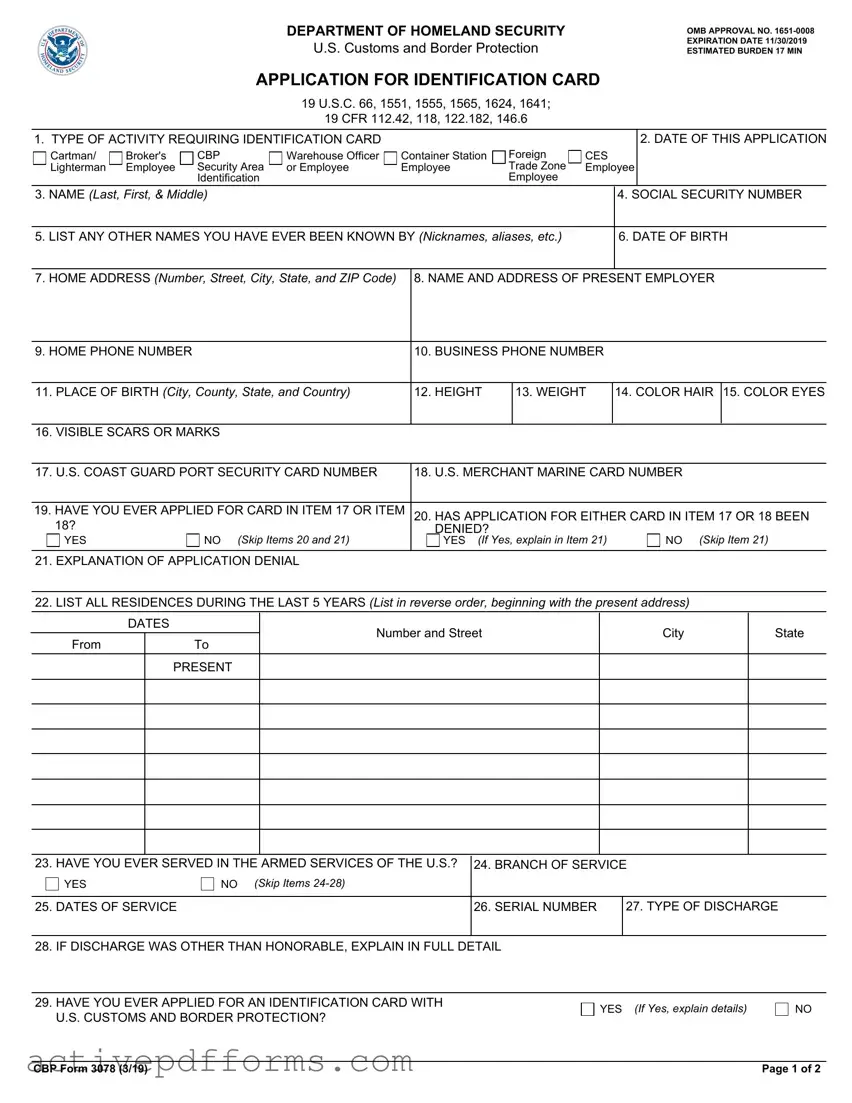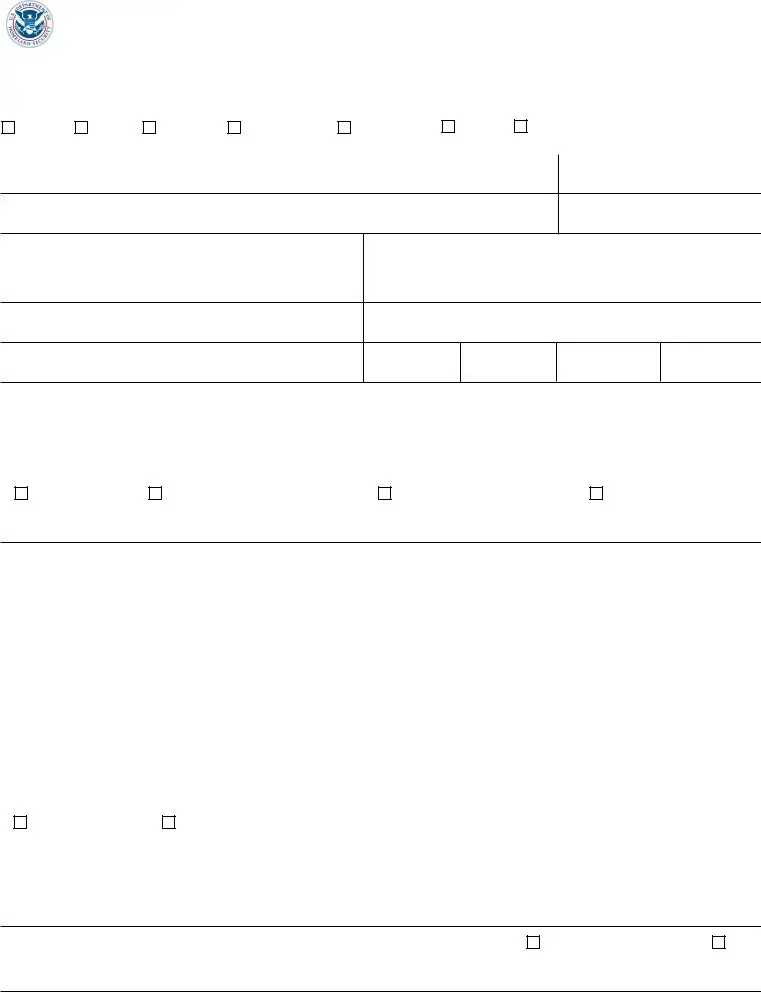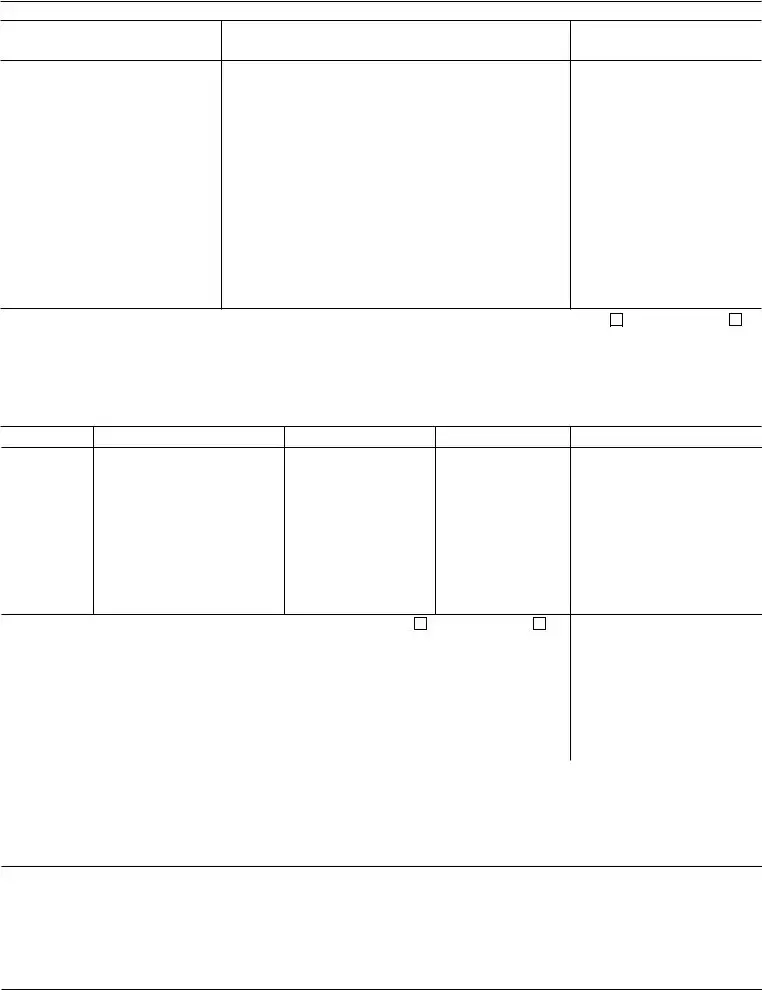In an era where security and identification are paramount, the CBP Form 3078 plays a crucial role for those needing access to secure areas within U.S. Customs and Border Protection's jurisdiction. This form, an Application for Identification Card, is a requirement set forth by the Department of Homeland Security, specifically for individuals like licensed cartmen, lightermen, and their employees, among others. These particular roles necessitate the possession of a CBP identification card to enter and operate within specified secure environments. The form, which must be filled with comprehensive personal information, employment history, and other critical details, also requires applicants to disclose any past criminal convictions or narcotic drug use. It is designed not only to validate the identity of the applicant but also to conduct a thorough background check to ensure that the individual meets the stringent criteria for holding such an identification card. With an estimated completion time of 17 minutes, it underscores the importance of accuracy and completeness in making declarations that are 'true, complete, and correct to the best of one’s knowledge and belief.' In essence, the CBP Form 3078 encapsulates a critical process in safeguarding the nation's borders and the integrity of its secure facilities, underscoring the balance between national security and individual access privileges.


